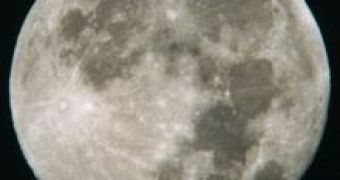Ohio State University planetary scientists have found the remains of ancient lunar impacts that may have helped create the surface feature commonly called the "man in the moon."
Their study suggests that a large object hit the far side of the moon and sent a shock wave through the moon's core and all the way to the Earth-facing side. The crust recoiled and the moon bears the scars from that cosmic encounter even today.
This discovery is important for future explorations, as well as for solving mysteries associated with the Earth's past geological impacts.
The early Apollo missions revealed that the Moon is not perfectly spherical, its surface being warped in two places: an earth-facing bulge on the near side is complemented by a large depression on the Moon's far side.
According to researchers Laramie Potts and Ralph von Frese, these features are the results of ancient impacts.
Potts and von Frese have reached this conclusion after using gravity fluctuations measured to map the moon's interior.
The "man in the moon" is a collection of dark plains on the Earth-facing side of the moon, where magma from the moon's mantle once flowed out onto the surface and flooded lunar craters.
How that magma made it to the surface is a mystery, but if he and Potts are right, giant impacts could have created a geologic "hot spot" on the moon, a site where magma bubbles to the surface.
Similar hot spots can also be found on Earth, the Hawaiian island chain being formed in this way, which makes researchers to wonder if our planet wasn't penetrated by such large cosmic objects.

 14 DAY TRIAL //
14 DAY TRIAL //